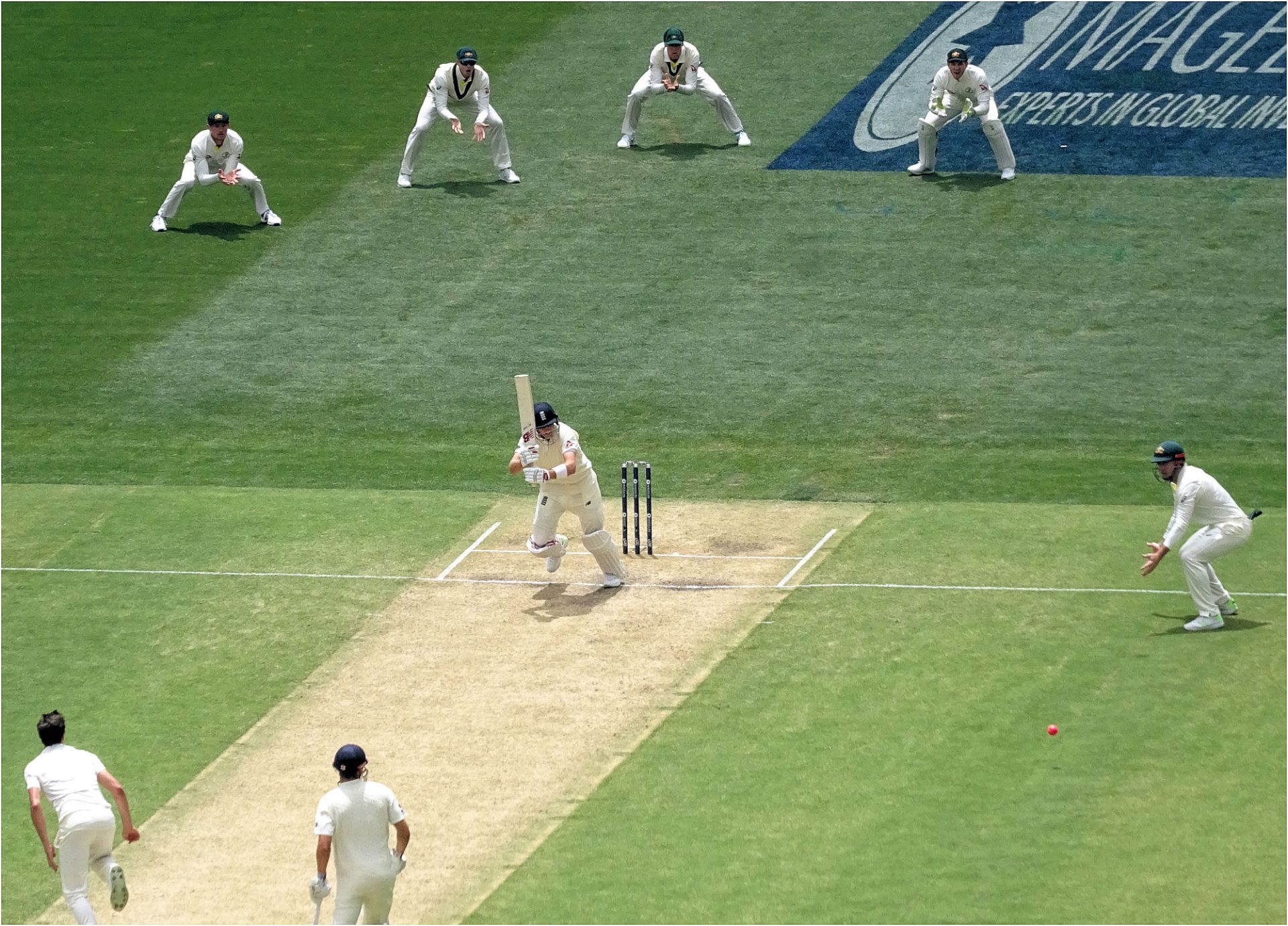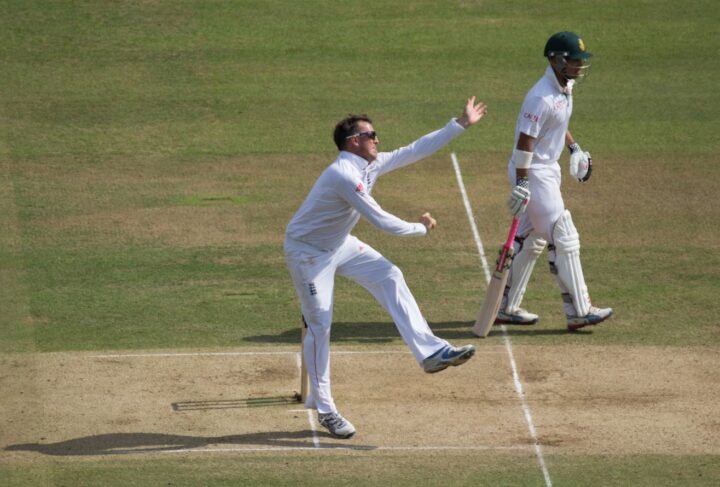By now we have all had time to digest Sir Andrew Strauss’s High Performance Review into the state of English cricket. For many of us it has left a sour taste in the mouth. The reduction of Championship games, the seeming untouchability of the Hundred and the general distain for the county teams makes it hard to swallow. Strauss didn’t help himself this month by referring to the county game as “one man and his dog” live on Sky Sports. If you are going to conduct a supposedly impartial review into something then perhaps you should not first disparage it on national TV.
Perhaps this should not be a surprise though. This sort of single mined cutthroat approach seems to have been the hallmark of Strauss’ career. The film The Edge detailed the ruthless levels that Strauss, as England captain, and Head Coach Andy Flower were prepared to go to lift England to number 1 in the world and the toll it took on the mental health of his players. Perhaps it is no surprise that he is now employing this approach to the counties and their members in his stated desire to see England men become number 1 in “all 3 formats of the game”. The question of whether this is actually the priority of most cricket fans or even what we actually want can wait for another day. What is now crystal clear is that if we are to resist these proposals, and most county members seem to want to do exactly that, then we have to provide a clear alternative to them. Rather than merely complaining about what we against we have to show what we are in favour of.
Just declaring “bin the Hundred” is not a feasible solution. The TV contract that was Tom Harrison’s parting gift guarantees it for a further 6 summers. It has also, and I know a lot of fans will dispute this point with me, garnered a number of new fans to the game, although whether this is worth the damage it has caused is another question entirely. So if getting rid of the Hundred is not an option then we must work around it and to do that we must consider the most radical idea the game has ever thought of.
My radical solution would be to split cricket into two distinct codes: the long form game played with white clothes and a red ball over several days, and the short form game with white balls, coloured clothes, franchise leagues and all the other modern razzamatazz. It is the only way to ensure it remains a viable sport in years to come and it can be done. Rugby is the prime example of this. Way back in 1895 the sport was split into Union and League, two distinct games with different rules, even with different numbers of players, but both recognisable as the sport of rugby with points being scored for tries and kicks at goal. Both T20 and 1st class matches, of course, are both recognisable as cricket, with runs scored, 4s and 6s for boundaries and 10 wickets for each fielding side to take.
Players at domestic level could then choose whether to go the 1st class route, with a career in the County Championship and hopefully Test cricket, or the white ball route, with a career in The Blast, The Hundred, and ODIs. This would allow the Championship to continue at the same time as the Hundred without losing its integrity. This idea could be extended globally, allowing players to choose to be a franchise gun for hire, playing IPL, CPL, Hundred and the new Abu Dhabi T20 among others, or specialise in the long form of the game, writing their name in the timeless records of Test match cricket and bringing glory to their countries.
No solution to the game’s ills is perfect but doing nothing and allowing the current mess to continue is simply not a choice. England led the world in the promotion of one-day cricket with the start of the John Player League in 1963 and also invented T20. Now we have the chance to put forward a solution that could benefit the whole world game once again.
We should also recognise that the game has been slowly moving in this direction for years. England appointed separate white ball and red ball captains back in 2015, Australia did the same in 2019. This year England have played Test and ODI cricket in the same week in two different countries with completely different teams. Far from being a brand new solution to the game’s problems, this proposal is merely accelerating the way the sport is already headed anyway.
It is also acknowledging that everyone who loves cricket is equally important while being realistic about the state of the game as it is. I long for a time when long form cricket was all that mattered. I would give anything to return to the days of long summer tours involving matches against the counties and a full summer of 17 Championship matches with a few one-dayers dotted around them but sadly that those days are gone. Test cricket will never be the sole pinnacle of the sport anymore and to ensure its survival we must be pragmatic about that fact. We must also acknowledge that everyone who loves our beautiful game is welcome because that little boy or girl in the Oval Invincibles shirt loves cricket just as much as you or I do.
This solution will allow players in both short and long forms of the game to devote themselves to their craft, with proper preparation and practice. Players who play solely red ball cricket will finally have the time to prepare properly for Test matches again, with proper warm up games in between, freed of the need to cram Tests into a shorter period of time to make room for endless white ball encounters. Who knows, England players may even have time to turn up for their counties more regularly, rather than dropping in as guest stars once or twice a season, which will raise the standard of the county game and boost attendances. My solution should also solve the problem of player burnout.
Those who choose the franchise route will still be able to play for England’s white ball teams but it must be made clear to them that the Test side is not an option, thereby offering cricketers a clear choice between the two codes they can specialise in.
I can already hear the myriad objections to such a proposal so let us go through a few of the more obvious ones. First of all, the most glaring one of all, that of money. I can already hear people saying, “ah yes, but obviously young players will follow the cash,” going down the far more lucrative route of franchise cricket rather than commit to long tours and time consuming Test matches for far smaller financial rewards, thereby relegating Test cricket to a secondary sport played by those simply not good enough for the franchise leagues.
I think the danger of this has been overstated. Again, rugby provides a useful example. Yes, the best players do usually head to union eventually where the financial rewards are greater, as is the international media exposure, but instead of withering and dying as many predict Test cricket would, League remains strong, supported by an extremely loyal fanbase, albeit mainly in the north, which remains remarkably consistent over time. The last Challenge Cup final at the Tottenham Hotspur Stadium was attended by 51,638 people. The Rugby League World Cup takes place in England this month and has already sold over 350,000 tickets.
Players want to be financially rewarded but they also want to be remembered. In 20 years’ time no one is going to be talking about the brilliance of an innings played for Trinbago Knight Riders or Trent Rockets but yet 24 summers later people are still reminiscing about the epic confrontation between Mike Atherton and Alan Donald in the Trent Bridge Test. Test cricket is still where you are remembered, where your name is carried through time and that will always be the case. Young players still want to play for their country, perhaps not in as large numbers as there used to be but enough to keep the flame of international cricket alive. We should remember that England’s centrally contracted players are extremely well remunerated for playing Test cricket, too.
It is also worth considering those whose techniques are simply not suited to the whizz bang of the short form game. Take a player like Dominic Sibley for instance, without long form cricket the Warwickshire man would not have a career. It is hard to imagine Sibley smashing the ball to all parts opening the batting for the Birmingham Phoenix. There will always be players who choose to play long form cricket because it the format that guarantees them the greatest chance of success and therefore a career. Players such as Liam Livingstone and Will Smeed, on the other hand, would be well served to focus on the white ball game.
Obviously, there are many problems that will need to be ironed out if this proposal is to have a chance of working and I am not claiming it is a silver bullet for all the game’s ills. However, doing nothing is simply not an option. This is not the time for hedging our bets and sitting on the fence, for coming up with a half-baked solution that aims to please everyone but ends up pleasing no one like the High Performance Review. It is the time for bold ideas and bravery if we want to preserve our beautiful game for future generations.
England has led the world in cricket innovation before, now it has the opportunity to do it again and perhaps save the world game in the process.
Billy Crawford









My view is we should accept Franchise cricket as a reality but not be bullied by it.
If the IPL, Caribbean cricket league or 16.66 run by the ECB want a fixture list that overlaps with County or International cricket let them.
I think you need to look at practicalities; the allure of big bucks is always the winner so this just wouldn’t be feasible unless those who failed at moneyball were allowed to trudge back cap in hand.
The HPR is nothing short of an insult to every cricket fan and club member. A raft of different proposals should have been put together to be considered by ALL stakeholders in a wide ranging engagement programme.
Instead it is rule by diktat with disgruntled service users – yeh I can use their jargon – having to cobble together arguments at local level and persuade counties to go into bat.
Absolutely shameful and the best suggestion I can think of is for the DCM to disband the ECB and set up a new governing format.
Agreed. Before this ill thought out nonsense HPR the ECB needs to be independently reviewed because it’s is clear to 1000s of County members that it has long since stopped being fit for purpose as a custodian of the game with its lies. It stinks and should be disbanded. Look we’ve been down this route umpteen times but fundamentally you can’t review cricket leaving the 100 out. The 100 has caused this mess in the first place and one or other of it or the Blast will go unless it combines.
The feed back from counties is strongly against the HPR and the ECB are going to get kicked up the arse big time at least in the shorter term. And James, sorry no, kids who watched the 100 simply don’t love the game like you or I. They are attracted mainly to the razamataz of coloured shirts, music and crisps and idiotic commentary. I bet all those “interested” youngsters were back behind the latest computer game in double quick time rather than watching even the latest T20 thrash on Sky. Kids are fickle and move on quickly specially when the ECB has cut funding to grass roots cricket to fund this shite.
But I’ve said it before, disinfranchise your core supporters at your peril. I fear a storm is coming that could even eclipse Packer.
Hi Doug. Article is written by Billy not me!
Sorry mate!
Births in which year, Doug, marked the descent of cricket fans from the pure, unalloyed genuine fans of your generation to the simple-minded, impatient morons of the present who are only pretending to love cricket?
Asking for a friend…and of course to see which group I fall into!
? Not sure whether your having a pop or not.
The England Test players are very well paid. Joe Root, when sponsorships etc come into it, earns over £1m per year. Therefore, I don’t think money will be too much of a problem in the big 3 nations.
Sadly, however, the problems start when we get to the likes of Sri Lanka where Tests and first class cricketers just don’t earn the same. That’s where they’ll be attracted mainly to the T20 leagues imho. The ICC would need to subsidise to make this plan work otherwise we’ll end up with endless Ashes series and thrashings in India! Occasionally, it’s nice to lose in other counties, too.
I see this argument a lot in relation to the non Big-Three countries, but I think it bears further examination.
Of course the biggest franchise tournaments offer pay packets way in excess of what a central contract in a “Small Nine” country is worth–and for that matter so do contracts in the less well-paying leagues if you get a few of them. But when Cricinfo published figures a couple of years ago, it appeared that in every single WTC country except maybe New Zealand and maybe Pakistanis on lower-tier contracts, centrally contracted cricketers were getting salaries which dwarfed the median wage in those countries. That includes all the countries who are considered to be poor in world cricket terms.
So it’s all relative. Those countries ARE poor relative to the Big Three, but their test players are inordinately wealthy compared to the average Sri Lankan, Bangladeshi, South African or Barbadian. And if we’re talking about player drain because the franchise tournaments are so well paid, it’s in the end the same argument as for the Big Three countries: it’s wanting to bridge the gap between being amazingly rich and obscenely rich. To put it another way: pulling a name fairly randomly, Suranga Lakmal–who’s no-one’s idea of one of the world’s best cricketers and who isn’t a T20 star–seems, as far as I can see, to have made more money in the last four years of his international career pkaying for a poor country than I’ll make in my lifetime, barring something rather improbable…and I’ve lived my whole life in Europe.
I think you will get that increasingly anyway. Look at most of the t20 squad alot of them only play whiteball. Roy, Hales, Ali, Rashid just off the top of my head.
As sad and divisive as this is there may be something in it that you make a choice (not necessarily for ever). You could almost put it as ‘at the end of your career would you rather have won the World Cup or the Ashes / WTC?’ I’ve only explicitly seen that question asked once many years ago and was surprised that the player in question (who was in the test and odi sides) said World Cup.
Longer term I agree something has to change but just wishing the Hundred / BBL / IPL away isn’t viable and I’ve yet to see players choosing to turn out for Essex rather than Kolkata in April. If you go down the route of choosing your colour of ball that ceases to be an issue.
We do need more to people be interested / coming to watch. Are my kids as interested in cricket as I am – no absolutely not. But for the first time they are interested and I’ll take that right now.
Scrapping the 16.66 and revamping the Blast was the solution and is the solution still. If it isn’t “practical”, “realistic” or “viable” that’s because the ECB didn’t and don’t want it to be. Giving into that is surrender.
This recipe of two formats would be a disaster in non-B3 countries. At least currently their top players can get an IPL top-up on their earnings and cash in on franchises in their sunset years. Force players to choose and it’s obvious where most (especially bowlers) will go. Red-ball cricket would become the reserve of the second rate and very rich. What next – golfers to choose between full courses and pitch-and-putt?
BTW it’s worth recalling how the different formats enrcihed some players. Glenn Turner was probably the first example, an initially stodgy batsman forced to expand his strokeplay by the Sunday League.
I think what you’re wary of in the non top-three countries has already happened. How much crossover is there between the West Indies’ test side and T20 side, for example? And who are their “top players” in terms of earning potential–Russell, Narine, Hosein, Pooran, Lewis and maybe Smith…or Brathwaite, Bonner, Roach, da Silva and Motie? There’s something similar in Sri Lanka and in South Africa’s batting.
This thought flitted across my mind too when thinking about the HPR though Billy has expressed it far more clearly and fully. It is hard to see it happening because of the conflict with the interest of professional cricket administrators however I think that it could work if there was sufficient will among those in power.
There are two models which a ‘First Class Breakaway’ could follow. The first would be to accept that it is a feeder league for the white ball circuit and that its best players would leave over time. This is the situation of football leagues in smaller countries which nevertheless continue happily. The second would be a ‘hard border’ of the kind that Rugby Union practiced against Rugby League when the former was amateur and which the PGA in golf seems to be gearing up to against LIV golf players. Under such a regime playing in a professional white ball game would preclude a player playing a professional red ball match in the future.
Financially, I can see it working in the Big Three where Test Matches are still a significant part of broadcasting deals. As others have mentioned, in other countries, Test Matches are run at a loss, let alone the domestic first class programmes which support them. It would seem that red ball cricket would become semi-professional at best in the Small Nine. Even so, that was how most cricket worldwide was conducted pre-Packer, so a red ball breakaway would not doom the game.